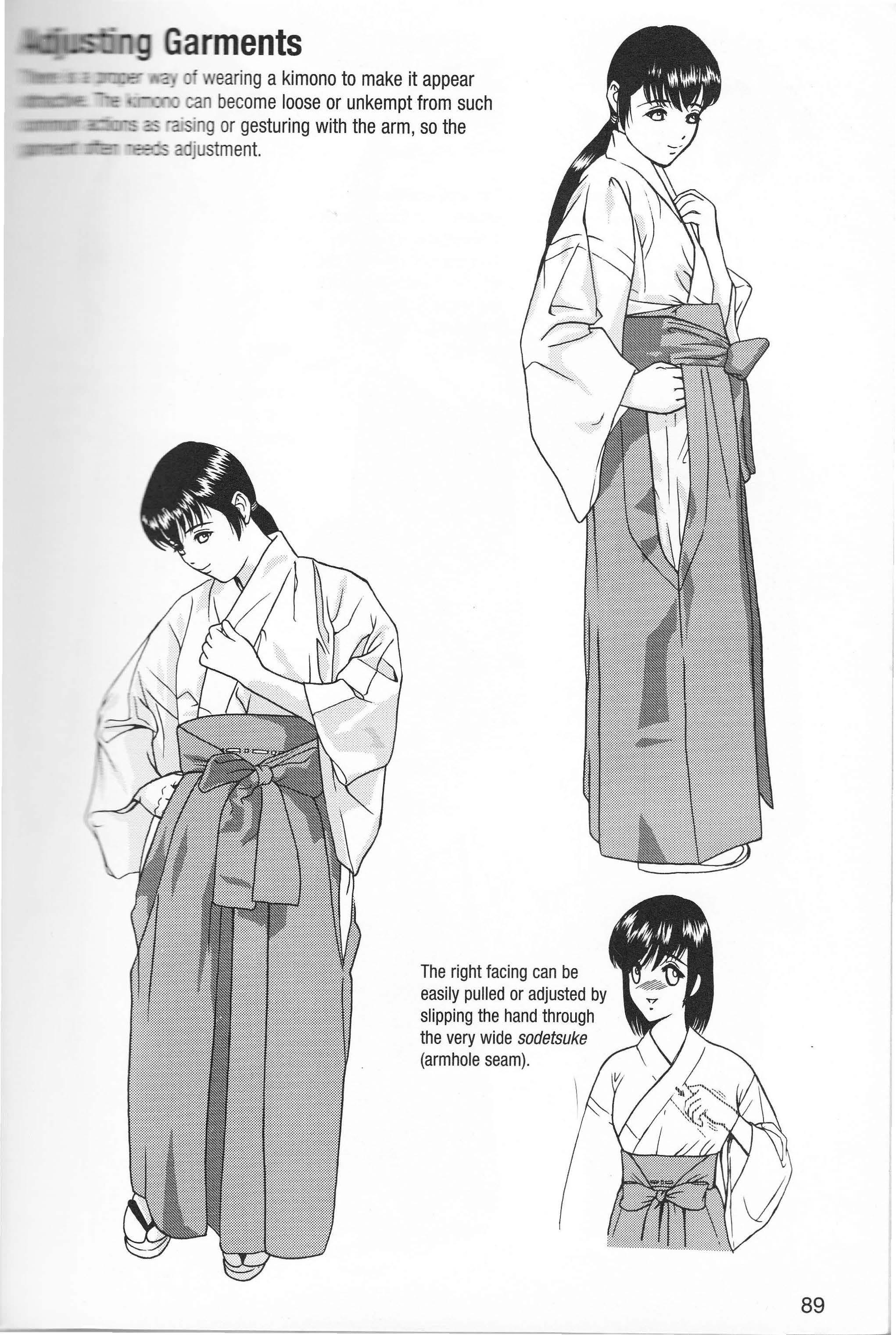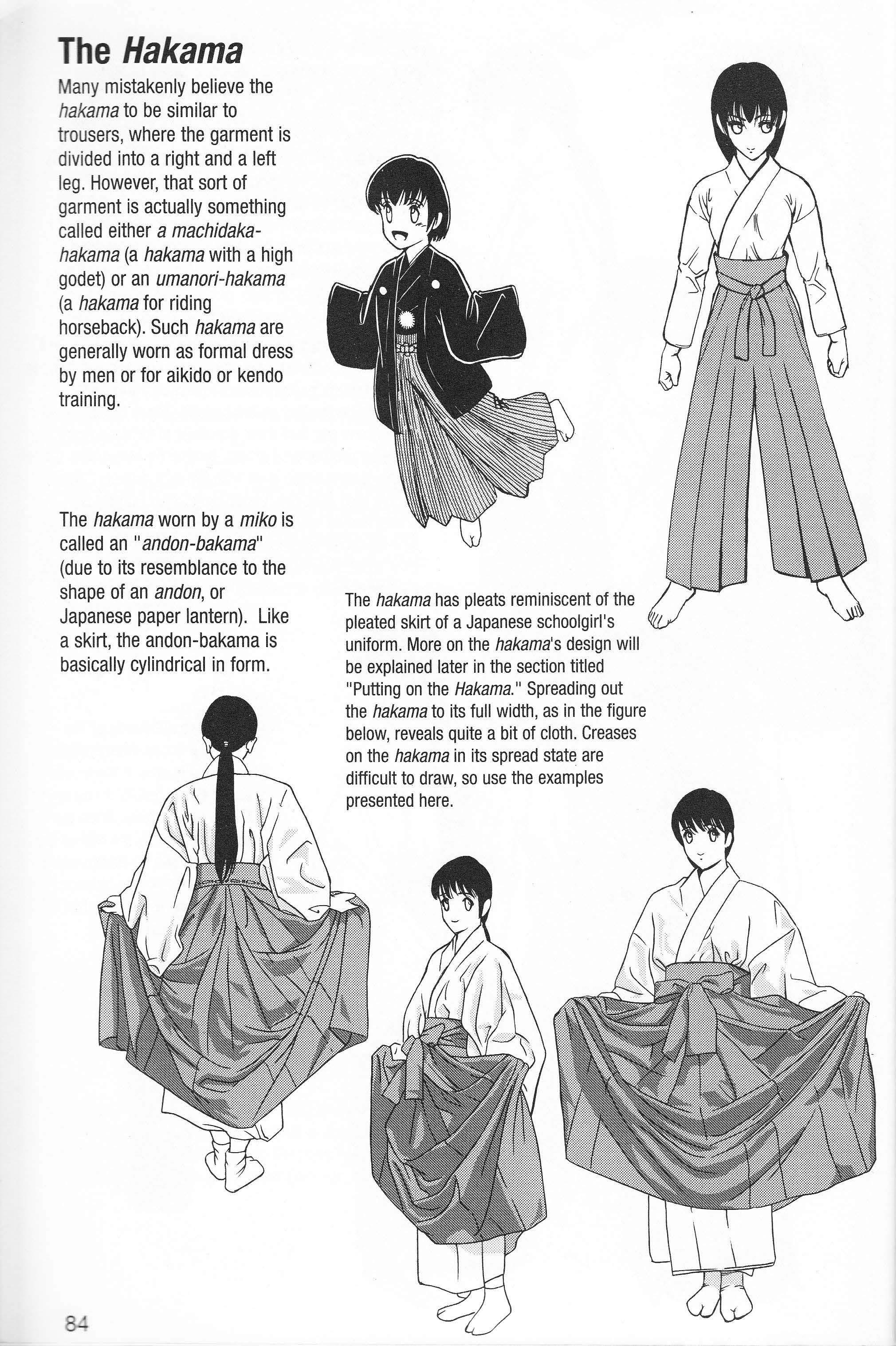
3 minute read
Both Arms Raised to the Side
by Charlie San
Both Arms Raised to the Side
ough both arms are still being raised, the visual differences of raising the arms to the side versus forward are great.
The furi generally falls to waist-level.
The openings at the hakama's sides extend to about kneelevel. When the arms are raised, the sleeves slide back, bringing the sleeve's bottom to a position almost identical to when the arms are raised forward.

The visible portions of :sleeve's interior are mo = complex than one migh expect. This is because sleeve of the juban appears underneath the hakui.

When the arm is raised, the sleeve rolls inward, taking on a triangular shape.


: - use foreshortening properly -= drawing a human figure. Note attempting to add a reasonable - of depth, such as for a ..r ith both arms extended to the _ _ overemphasizing a sense of - except where intended.
When the arms are raised to the side, the clothing should be drawn as if pulled upward.

Creases that form around the shoulders change according to whether the arms are raised forward or to the side. When the arms are raised forward, the fabric becomes wrapped around the arms and appears to be lifted up. 121
character take on a three-dimensional appearance, making them indispensable to suggesting volume and weight.


The shadow indicated by the arrow is serving as an accent. Avoid When the inside of the sleeve is opposite the light source, putting it in shade, a shadow is also cast across the body. The size of this shadow changes according to the angle of the light source. Shadow cast across the body

Shading inside
the sleeve While gravity is pulling the sleeve down, the turi curls inward, causing it to take on a weightier look.
A 50-line screen tone of 30% density was used on the sleeve in this illustration.
Note the facing side of

The sleeve slides back along the arm and bunches. the arm.

Note the shoulder-to-back The hakw's form alters according to the angle at which the arm is raised. As shown on this page, the shapes of the shoulders and back
contour. still change even when the raised arm is hidden by the body.
When the arm is lowered, the furi .._ becomes tucked back against the side, and the sleeve takes on a cylindrical shape.

GMng Volume to Creases and Folds
e A shows the typical curved line used for a crease. We do ave a sense of the crease's depth, raising the question of ow to achieve such an effect. One way is to attach screen tone o the side of the crease, creating a three-dimensional look. Another way is to draw a curve as shown in Figure B, where the first line starts at Point A and then a second line is drawn branching off of the first Point B, thus suggesting depth.
gure <:::::::--____ _
Rgure B ee:_ .....__a
Instead of drawing a line, screen tone may be used to suggest shallow ripples. However, take care not to use too much tone. Shadow added for accent











